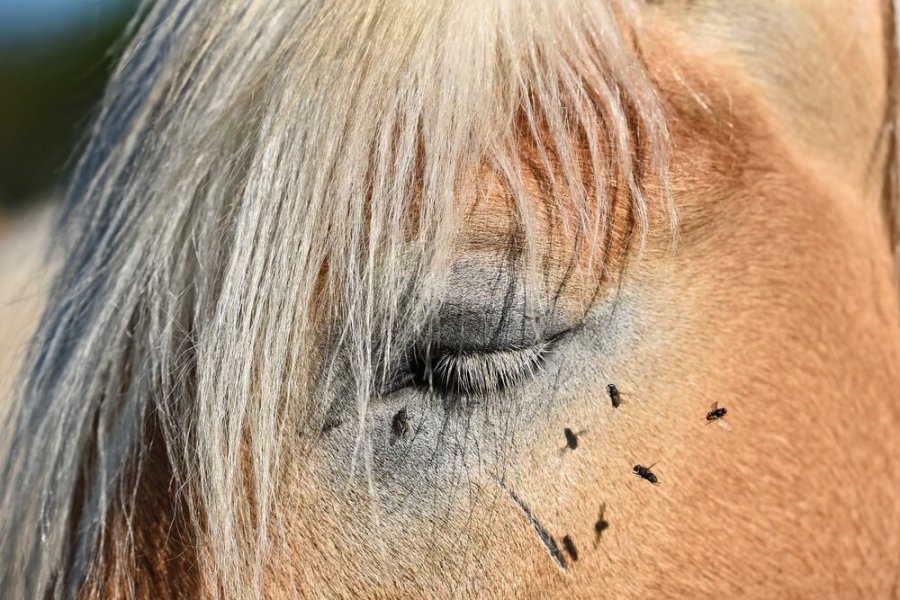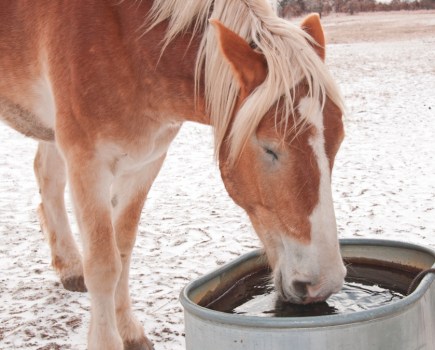The downside of long sunny summer days are the flying nuisances that bother and bite our equine friends: horse flies. Ensuring they don’t bother your horse is an important aspect of horse care in the summer to optimise their welfare and comfort. But how can you best tackle these pesky critters?
First things first — know your enemy! There are many different types of flies, each with their own habits and behaviours, and they each pose their own challenges when it comes to control measures.
Even when the most significant threat flies pose to horses is annoyance — as is the case in the UK — fly control is still vitally important for animal welfare and maintaining performance.
Horse flies
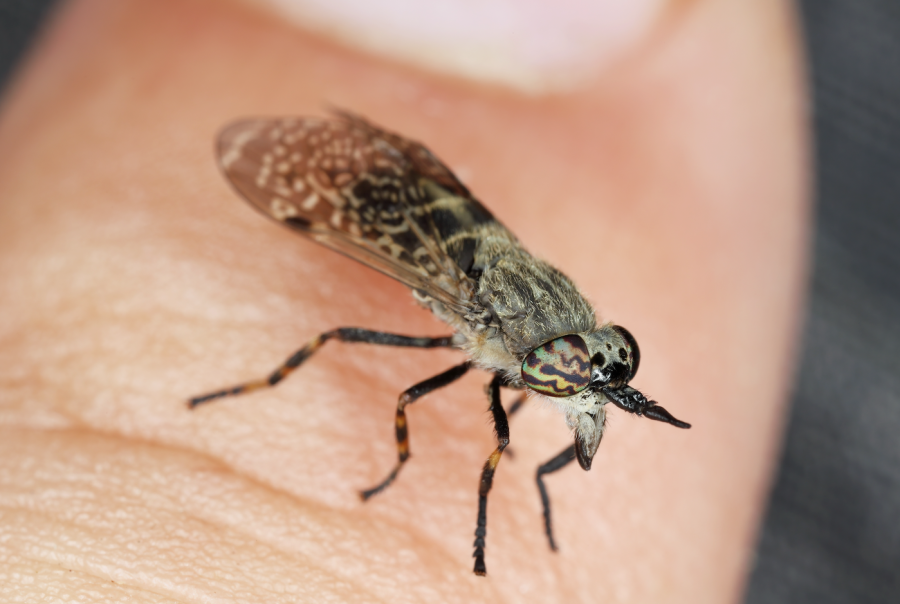
Horse flies have a painful bite for humans and horse
Nemesis to many, the dreaded horsefly elicits painful bites and can cause serious distress to horses. They are persistent, aggressive and hard to control.
Have you ever wondered why your horse seems to get bitten by horseflies repeatedly?
As their bites are so painful, when bitten, horses swish and kick, dislodging the horseflies mid-feed, causing them to repeatedly land and re-bite.
Horseflies are attracted to smell — such as sweat, urine and your horse’s breath — as well as warmth and bright light.
They also prefer horses with darker coats because they are polarotactic, meaning that they are attracted to polarised light reflected by dark skin.
The striped and spotty fly rugs available to buy aren’t just a fashion statement — white coats, stripes and spots reflect depolarised light, making it less attractive to horse flies.
Midges
Don’t be fooled by their tiny size — a swarm of midges can cause huge annoyance to horses and ponies.
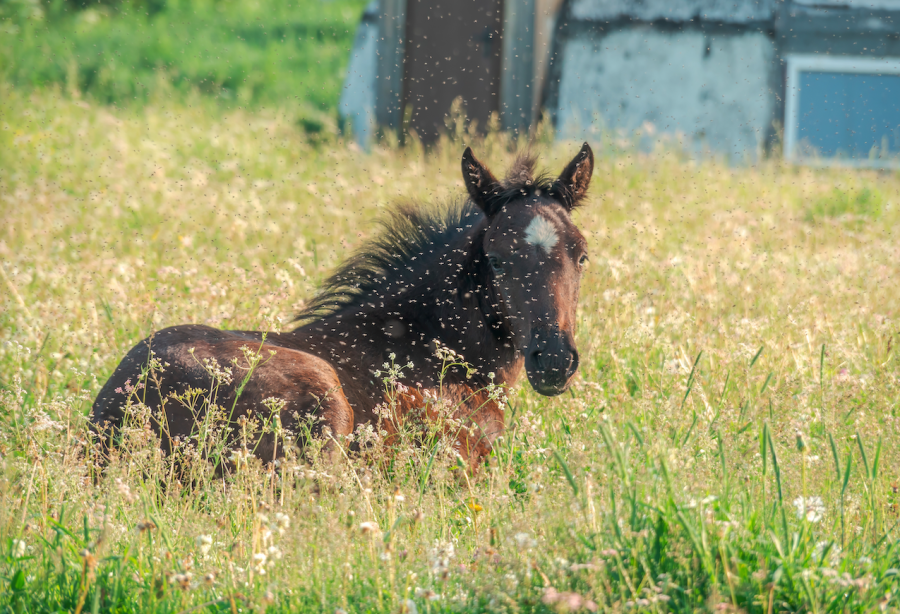
A swarm of midges target a resting foal
Midges (Culicoides) tend to bite horses along their mane and tail and can trigger an allergic reaction — this is sweet itch.
Susceptible horses find the bites intensely irritating and itchy, and can cause considerable self-harm when rubbing against solid structures, such as trees and fence posts.
Midges famously favour wet, marshy areas, but they love dense undergrowth too.
They are most active at dusk and dawn, so stabling horses at these times and using a well-fitted fly rug are key elements in protecting horses from these tiny critters.
Although midges can be found all around the UK, Scotland is known to be their home, with more than 35 different species being found there.
The cooler climate and vast expanse of water makes Scotland a perfect breeding ground for these tiny pests.
Stable flies
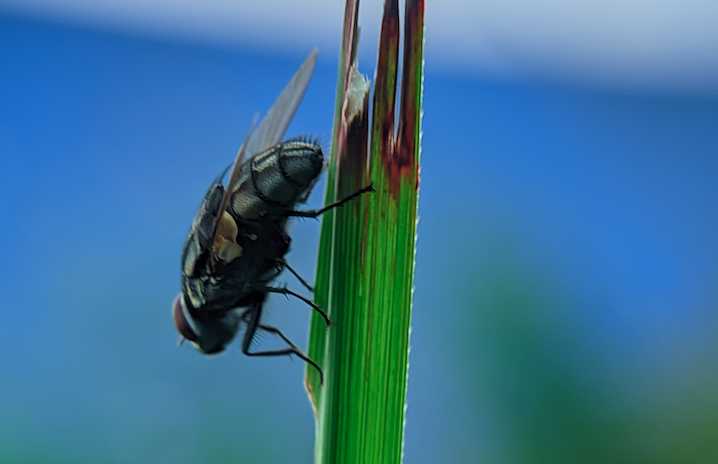
Stable (house) flies are very common
As the name suggests, the stable fly is often found around horse’s stables. They are attracted to the warmth and smell of urine and faeces, so keeping stables clean is a must when trying to reduce the bother of stable flies.
If you’ve ever seen your horse or pony stamping their legs and biting at their bellies, it’s highly likely these biting flies are to blame.
As well as being a nuisance, stable flies also transmit disease, which affect horses’ eyes and stomach. Typically active early in the morning or late in the afternoon, these flies peak in late summer.
Black flies
Small and incredibly irritating, black flies (also commonly called house flies) target the horse’s face and ears, often causing crusty, itchy lesions.
It is well understood that flies can transmit disease for one animal to another, but it is thought that the black fly is also responsible for spreading viruses from one location to another on the same horses.
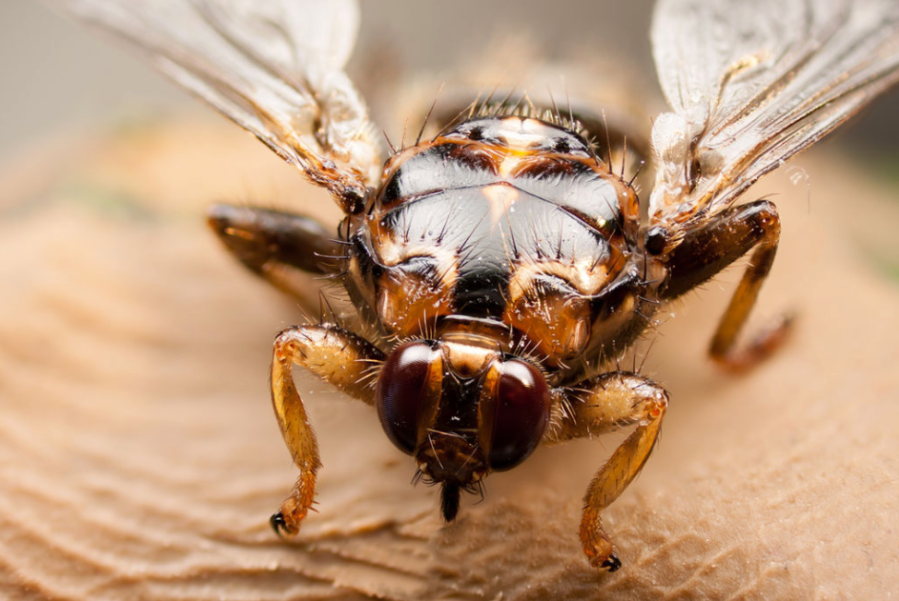
Crab flies have hook-like feet and move like crabs. Credit: Hippobosca Equina)
As well as being involved in the development of aural plaques, black flies potentially have a role to play in spreading sarcoids on a horse’s body.
Crab flies
Resident of the New Forest is the crab fly.
These wingless critters spend their life on the horse, moving about with a ‘crab-like’ movement.
They are surprisingly well tolerated by horses who reside in the area, but should a non-local horse be exposed, they would suffer intense irritation.
Ticks
Unsightly ticks are small arachnids (the same class as spiders) which undergo four phases in their life cycle: egg, larvae, nymphs, and adult.

Ticks latch on to a host and suck blood
You will normally find ticks in wet environments, on grass or in low bushes, especially from March to June, and then again from August to November – but there is a very significant risk of picking them up year-round.
The tick is blind but will feel vibrations, body heat, and carbon dioxide from one’s breath. If it finds you, the tick will crawl onto its host.
The tick will choose its host based on its size. Larvae will normally seek out small birds and mice, whilst nymphs will attach to rabbits, cats, and dogs, and the female ticks prefer larger animals, like horses.
There is a lot to say about preventing ticks and what to do if you find one on your horse, so we’ve dedicated a section to ticks here.
Other parasites that can bother a horse in the summer are worms and bots.
Peak times for different flies
| Fly type | Time of day | Time of year |
| Horse fly | Daylight | July/August |
| Midge | Dawn and dusk | Spring to autumn |
| Stable fly | Early morning, late afternoon | Late summer |
| Black fly | Daylight | Spring to autumn |
How to keep flies at bay
Every horse is bothered by flies at some point. We know they like water and woodlands, prefer still air and find the scent of urine and faeces irresistible — so how can we use that knowledge to our advantage?
1 Graze horses away from standing water
Fresh drinking water should always be available to your horse, but aside from the drinking trough, try to ensure your horse’s summer grazing is away from rivers, ponds, lakes, or damp marshy areas.
2 Flies like still air
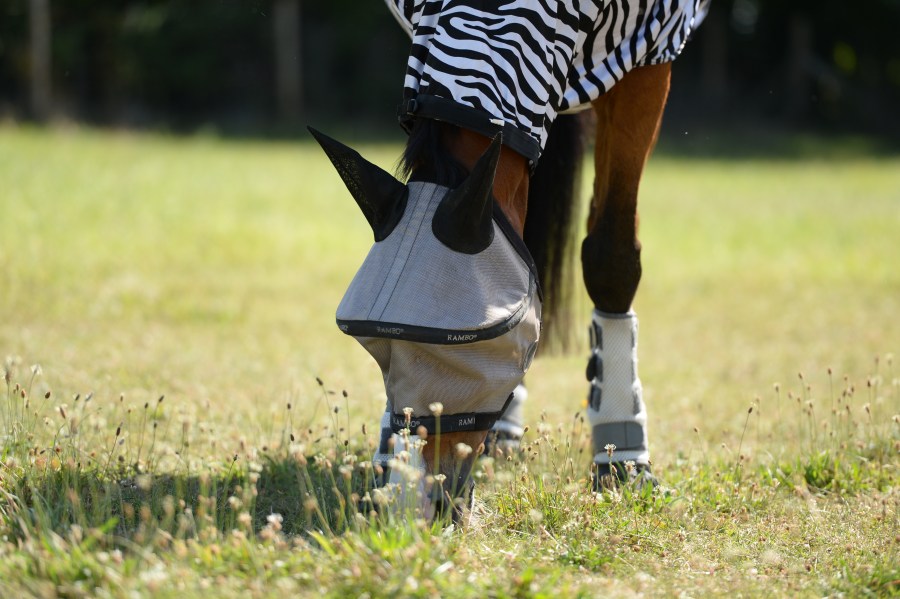
Rugs with stripes or spots reflect depolarised light which deters horse flies
If you can keep your horse somewhere with a breeze it will help to blow the pests away. High ground is great for this.
3 Use a stable fan
If your horse or pony will tolerate it, a well-positioned fan will blow the air away from your stable door, preventing flying invaders from entering.
4 Clean your surroundings
Regularly poo-pick paddocks and muck out stables daily to remove droppings. This removes flies’ breeding ground, reducing the number of flies your horse or pony encounters.
Make sure all urine-soaked bedding is removed from stables and the muck heap is well away from the yard.
5 Keep your horse clean
Flies can’t help but be attracted to the aroma of sweat, urine and faeces. To prevent your horse from being a prime target for flies, wash off any stable stains thoroughly and make sure to wash your horse after exercise/on hot days.
6 Beware the muck heap
It makes little sense to remove manure from a stable and put it in a pile nearby. Try to ensure the muck heap is far from both your stable and grazing, to reduce contact between flies and your horse.
7 Stable when flies are active
Midges typically swarm at dawn and dusk, so bringing your horse and pony into their stable at these times can help reduce the chance of them being bitten.
Horse flies prefer bright light and rarely enter stables, so using shelter can help protect your horse from them.
Depending on the flies that are bothering your horse, stabling at different times can be used to your advantage.
8 Use a fly rug
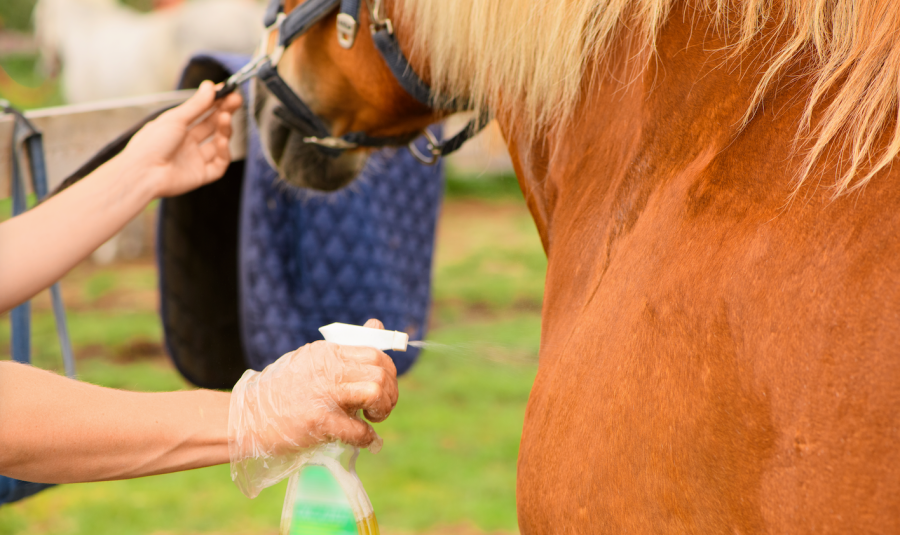
Fly sprays can help protect horses from flies
When correctly fitted, fly masks and rugs can provide an effective physical barrier against flies.
Be prepared and use fly rugs before the flies start to bite. If your horse suffers with sweet itch, ensure they wear their rug when stabled too.
To deter flies further, choose a rug that is striped, spotted or white.
Flies are attracted to polarised light, but such rugs reflect this light, making the horse less appealing to flies.
9 Use a chemical deterrent
Fly sprays, cream, ointments and washes play a vital role in deterring flies from landing on your horse.
There are many options available. Choose a good repellent with high levels of DEET to help deter flies from biting.
Make sure to apply the deterrent at least twice a day for it to be effective, but be aware that when fly infestation is very heavy, re-application may be required more frequently.
Images: copyright Shutterstock and Your Horse Library/Kelsey Media Ltd

